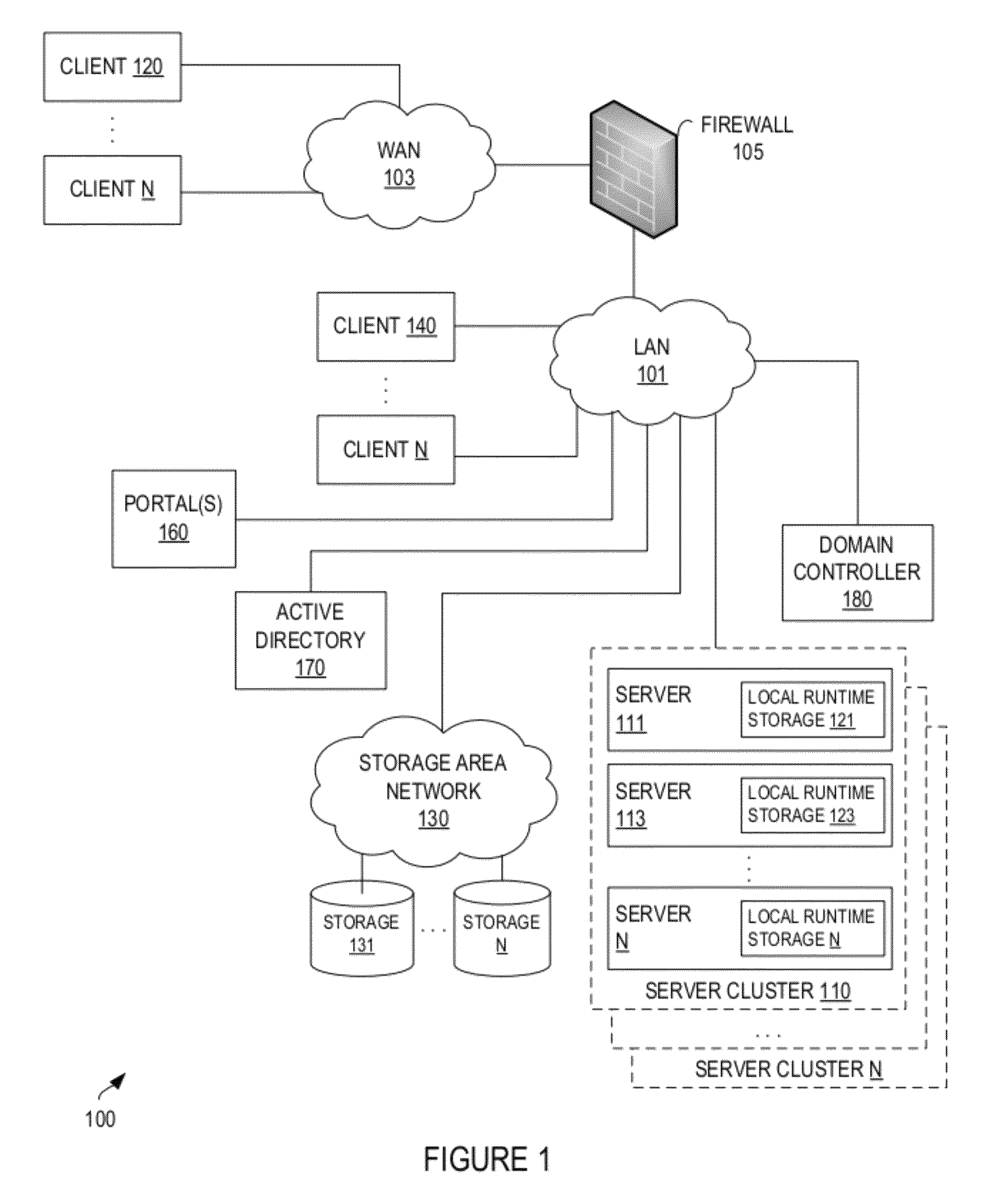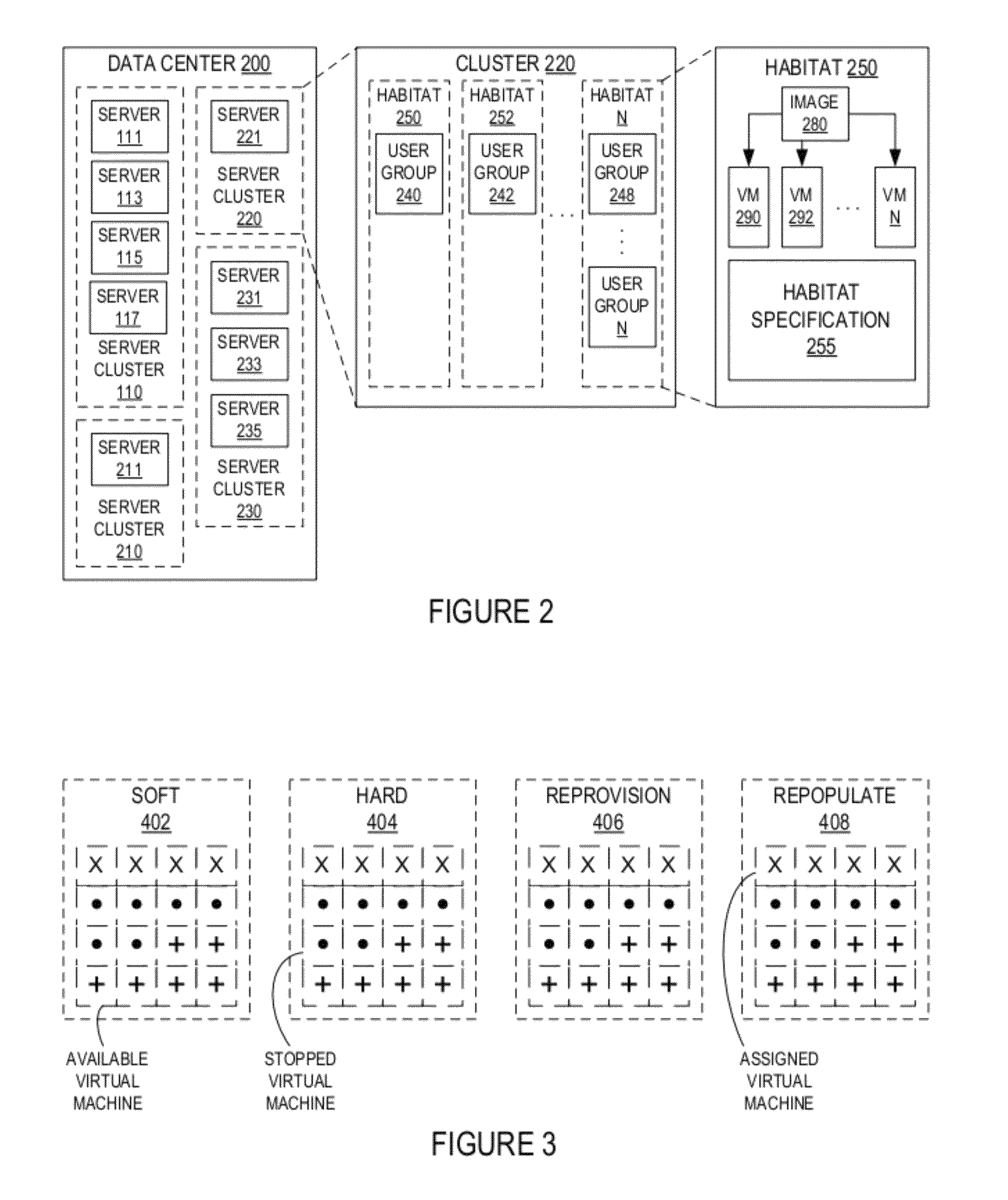Automated rapid virtual machine provisioning system
a virtual machine and provisioning system technology, applied in the field of virtual machines, can solve the problems of slow provisioning/reprovisioning current approaches, affecting the service(s), and difficult scaling, and affecting the service(s), and neither practical nor desirabl
- Summary
- Abstract
- Description
- Claims
- Application Information
AI Technical Summary
Benefits of technology
Problems solved by technology
Method used
Image
Examples
example 1
Increasing Habitat Memory and Processing Power
[0096]FIG. 5 is a screenshot of one embodiment of user interface 500 illustrating example changes made to a Habitat specification. In one embodiment, user interface 500 may be implemented as a portal page on portal(s) 160. In this example, Resources 510 shows that the processing power is increased from 100 MHz to 110 MHz for the Habitat specification VM resource parameter “CPU (MHz)” and the memory size is increased from 256 MB to 288 MB for the Habitat specification VM resource parameter “Memory (MB)”.
[0097]As illustrated in FIG. 6A, the change in the processing power causes VMs 1-16 to be placed into Soft bucket 402 (and thus are shaded in FIG. 6A) because the “CPU (MHz)” parameter can be updated while it is running. Simultaneously, the change in the Habitat memory size causes VMs 1-16 to be placed into Hard bucket 404 because the VMs would need to be stopped before the “Memory (MB)” parameter can be updated. No VMs are in Reprovision ...
example 2
Updating Habitat Image file
[0103]FIGS. 7A-E show by example how virtual machines of a Habitat can be reprovisioned incrementally utilizing multiple buckets. In some embodiments, a change in a Habitat specification may cause one or more VMs in the Habitat to be reprovisioned. For example, a change in the VM image will cause all the VMs in the Habitat to be placed into the Reprovision bucket. Some of the VMs may be put into the Repopulate bucket, since they may need to be deleted to support the higher resource requirements of the remaining VMs.
[0104]As illustrated in FIG. 7A, a change in the VM image causes all 14 VMs from FIG. 6F to be placed into Reprovision bucket 406. Since VMs 6-12 are currently stopped, they can be updated first. To meet the server concurrency limit of five (the maximum number of actions allowed by the server to take place at the same time), only stopped VMs 6-10 are recreated and removed from Reprovision bucket 406 thereafter, as shown in FIG. 7B.
[0105]FIG. 7C ...
PUM
 Login to View More
Login to View More Abstract
Description
Claims
Application Information
 Login to View More
Login to View More - R&D
- Intellectual Property
- Life Sciences
- Materials
- Tech Scout
- Unparalleled Data Quality
- Higher Quality Content
- 60% Fewer Hallucinations
Browse by: Latest US Patents, China's latest patents, Technical Efficacy Thesaurus, Application Domain, Technology Topic, Popular Technical Reports.
© 2025 PatSnap. All rights reserved.Legal|Privacy policy|Modern Slavery Act Transparency Statement|Sitemap|About US| Contact US: help@patsnap.com



